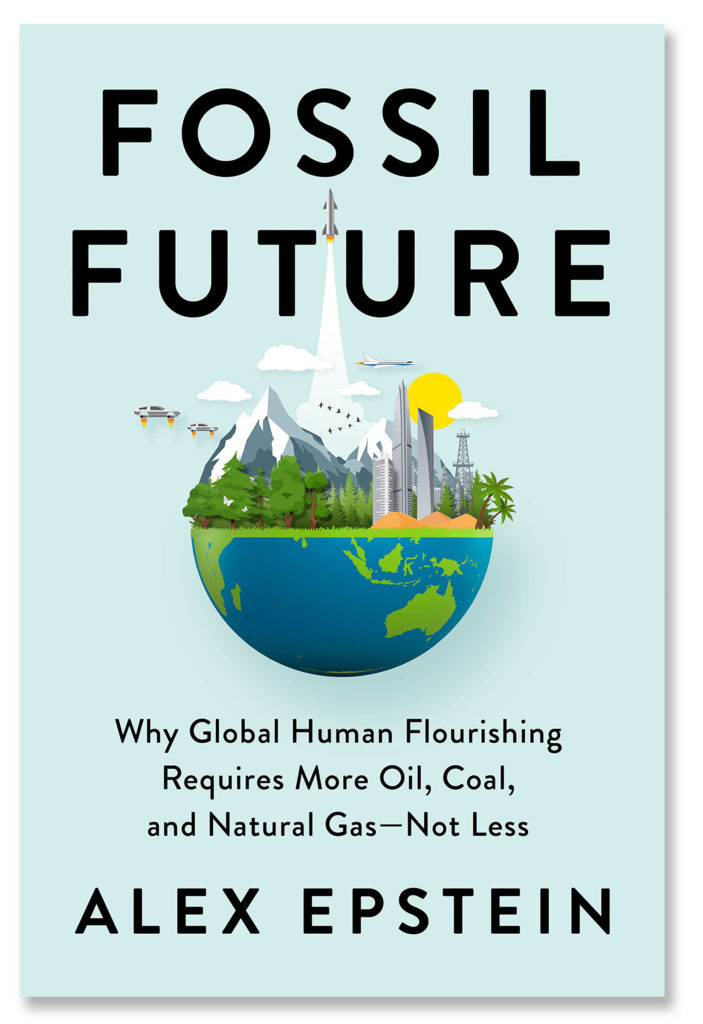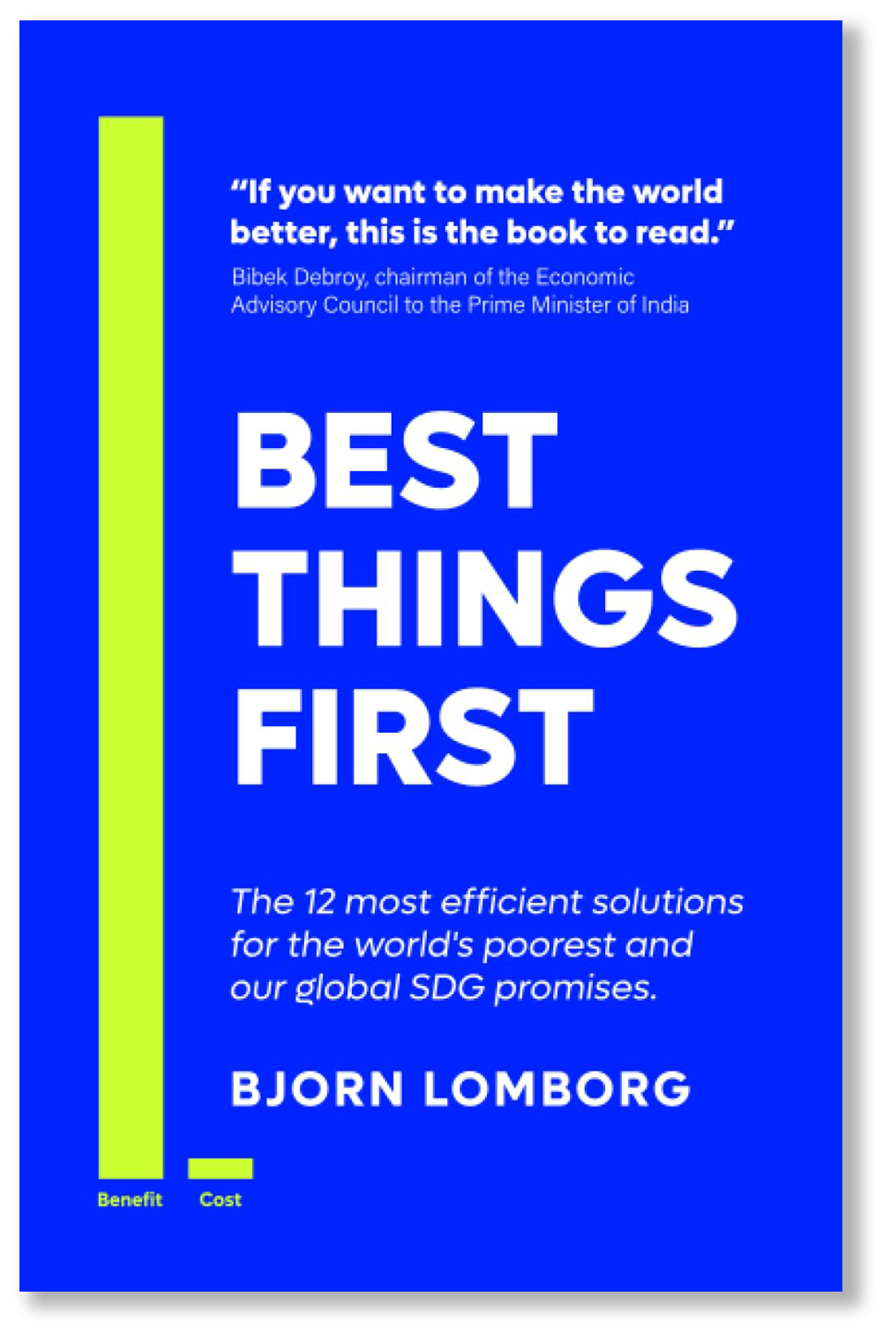There are several goals for organizations and nations to make the world a better place for humans ranging from the elimination of deadly diseases or the utilization of energy resources to control limit change. There are many solutions and opinions on how to achieve the goals. Achieving the goals is the problem that facility directors must face and manage as they continue to meet the needs of the organizations they serve. The two books reviewed here recognize that intermediate steps are needed to achieve lofty goals. The books provide a rational way to achieve the goals even if the method is not a generally accepted approach. Each institution must decide what it will do and rely on leaders to find the right way to get there; these books provide some guidance.
Fossil Future: Why Global Human Flourishing Requires More Oil, Coal, and Natural Gas – Not Less
Epstein, Alex, Penguin Publishing, NY, 2022, 426 pages, hardcover, $30; ebook, $10.
 The application of energy, in any form, has made life easier for everyone who has access to sufficient supplies of energy. That’s the fundamental premise of Fossil Future by Alex Epstein and why he argues that fossil energy cannot—and should not—be eliminated in the short term. He makes the argument that to improve human life and to share in the benefits available through energy, the continued use of fossil fuels is required.
The application of energy, in any form, has made life easier for everyone who has access to sufficient supplies of energy. That’s the fundamental premise of Fossil Future by Alex Epstein and why he argues that fossil energy cannot—and should not—be eliminated in the short term. He makes the argument that to improve human life and to share in the benefits available through energy, the continued use of fossil fuels is required.
Wind, solar, and tidal energy can be traced back to the sun and the moon’s orbits around the earth. Nuclear energy is another form of solar energy because the sun is really a continuously running fusion reactor creating new elements and generating energy in the process, a process that hasn’t yet been mastered by engineers on earth. Fossil fuels—coal, oil, and natural gas—are now controversial forms of energy despite being derived from plant materials, generated by the sun and biological processes, and laid down during ancient geologic eras.
Fossil fuels, a concentrated form of energy, are abundant, portable, and readily used by modern society; fossil fuels are easily used by less modern societies and, when available, are still preferred over biological fuels due to the greater energy value. Sure, fossil fuels create carbon dioxide (CO2), an issue that must be resolved because of additional CO2 in the environment. However, through continuous improvements, fossil fuel use is becoming cheaper for current and future users of energy. As energy becomes cheaper to use it becomes more accessible for everyone around the world.
The author describes, in a logical manner, why fossil fuels cannot be eliminated in the short term and cannot be eliminated completely. There is an honest discussion about CO2 levels but included are the livability benefits associated with easily accessible, portable, and concentrated energy versus the CO2 impacts. Recognizing how to address climate, locally and as it may change over time, is a major issue. Diversity and adaptation are important issues essential for long-term survival.
The message in Fossil Future is difficult and challenging for some. The author challenges popular thoughts about energy and future applications of energy. He does not ignore the challenges ahead but recognizes human intelligence and demand for better conditions. If your workplace wants to move away from fossil fuels, you should understand how to make the transition and why. Fossil Future is a valuable read for those struggling to find solutions for energy consumption or for those interested in understanding the challenges ahead as the world attempts to deal with high CO2 levels.
Best Things First: The 12 most efficient solutions for the world’s poorest and our global SDG promises
Lomborg, Bjorn, Copenhagen Consensus Center, Tewksbury, MA, 2023, 270 pages, hardcover, $20; softcover, $11, ebook, $6.
 As a member of an ISO working group looking at the intersection of facility management standards and the United Nations (UN) Sustainable Development Goals (SDGs), I was drawn to Bjorn Lomborg’s book, Best Things First. The UN created its SDGs in 2016 following the Millennium Development Goals (MDGs) that were supposed to be completed by the end of 2015. The MDGs were not completed, despite the efforts of the UN, 100 nations’ commitment to the goals, and billions of dollars invested. Some of the metrics associated with the goals were achieved, but not all and not by most. Lomborg argues the lack of achievement was due to a focus on financial/economic measures such as return on investment and, thus, lays the foundation for his recommendations in Best Thing First.
As a member of an ISO working group looking at the intersection of facility management standards and the United Nations (UN) Sustainable Development Goals (SDGs), I was drawn to Bjorn Lomborg’s book, Best Things First. The UN created its SDGs in 2016 following the Millennium Development Goals (MDGs) that were supposed to be completed by the end of 2015. The MDGs were not completed, despite the efforts of the UN, 100 nations’ commitment to the goals, and billions of dollars invested. Some of the metrics associated with the goals were achieved, but not all and not by most. Lomborg argues the lack of achievement was due to a focus on financial/economic measures such as return on investment and, thus, lays the foundation for his recommendations in Best Thing First.
For those unfamiliar with the SDGs, see https://sdgs.un.org/goals. There are 17 goals ranging from “no poverty” to “climate action.” Achievement of the goals is measured by 169 metrics that are all expected to be achieved by 2030. With 50% of the time remaining to achieve the goals, Lomborg uses the metrics to assess when the goals will be completed—late or never. Recognizing that the goals are internationally recognized and important, Best Things First identifies 12 goals that will result in the greatest benefit fastest.
The impressive feature of this book is that Lomborg relies on the expertise of dozens of outside experts and has summarizes their thoughts in each chapter. The experts and the academic paper(s) referenced are identified at the conclusion of each chapter. Why is this important? The recommendations provided are not the author’s but those of international experts in the relevant area. The experts used data and measures from the United Nations to assess the effect of progress and the potential goal achievement. The estimated cost of each international goal is provided, likely most helpful for those benefactors interested in what it will take to achieve a goal of interest. But from a more focused perspective, each chapter represents a level-headed approach to maximize benefits.
Nearly every institution wants to make things better for society; that’s the reason for education, research, and public service. However, prioritization is frequently necessary to ensure the academic mission can achieve the vision. If your institution has any of the UN SDGs as part of its strategic plan vision and you are struggling with the tactics to achieve the objective, Best Things First may provide the guidance needed.
Ted Weidner is professor of engineering practice at Purdue University, West Lafayette, IN, and consults on facilities management issues primarily for educational organizations. He can be reached at [email protected]. If you would like to write a book review, please contact Ted directly.
Bookshelf
Book reviews on current publications relevant to the profession, trends, and working environment of facilities and educational managers and professionals. To contribute a book review, contact Ted Weidner, field editor of this column.
See all Bookshelves.


